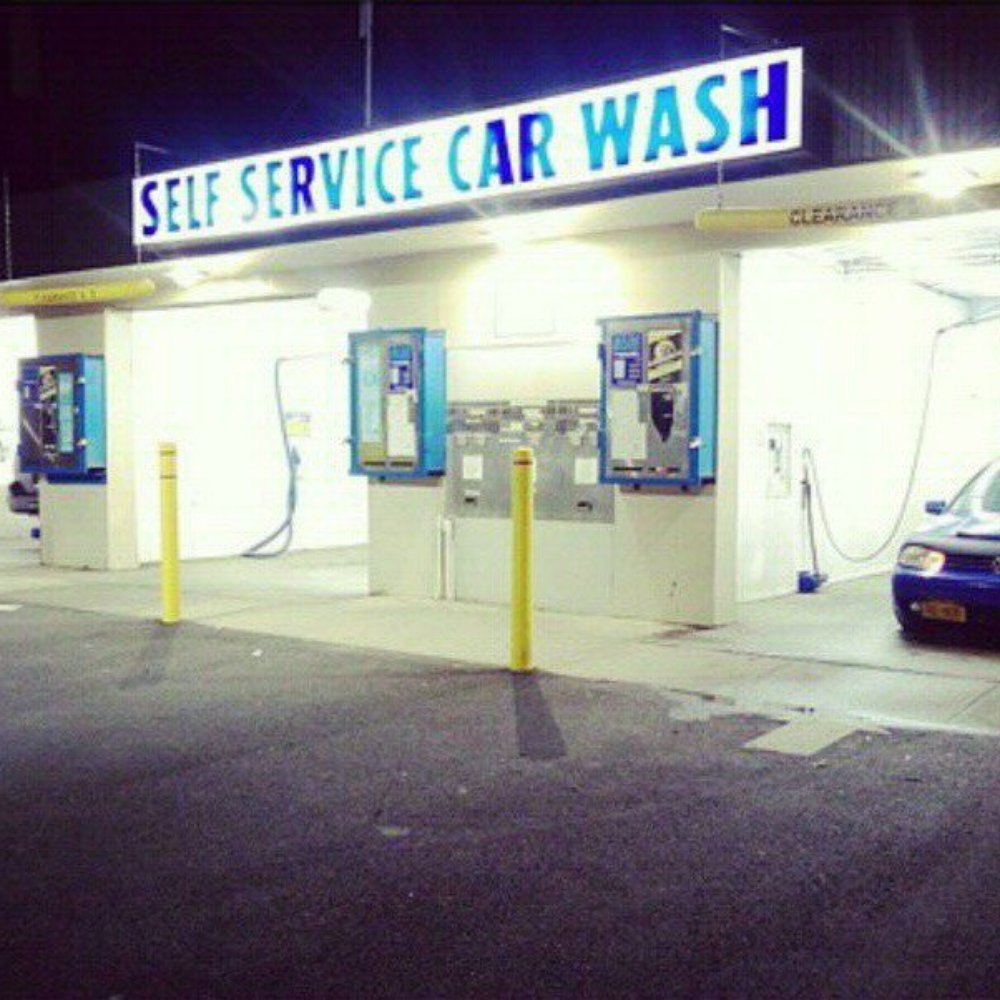Washing your car is an essential part of maintaining its appearance and protecting its value. While many people opt for professional car washes, doing it yourself can be a cost-effective and satisfying alternative. A self car wash allows you to save money, customize the cleaning process, and turn it into an enjoyable activity. In this article, we will outline the steps necessary for a successful DIY car wash, discuss the benefits of this approach, and provide tips for making the most out of your car care routine.
The Benefits of Self Car Washing
Economic Savings
One of the most significant advantages of washing your car yourself is the cost savings. Professional car washes can charge anywhere from 10toover100, depending on the services offered. In contrast, purchasing your own supplies and washing your car at home requires a one-time investment. Once you have the necessary tools, frequent washes cost significantly less.
Additionally, performing regular washes can help prolong the life of your car’s finish. Keeping your car clean reduces the buildup of dirt, grime, and other contaminants that can cause damage. Protecting your vehicle’s exterior not only enhances its appearance but also helps maintain its resale value.
Customization and Control
When washing your car at home, you have complete control over the process. You can choose which products to use, the techniques for washing, and the level of detail involved. This flexibility allows you to tailor the washing process to your preferences, ensuring you achieve the desired results.
For example, if you prefer eco-friendly cleaning products, you can easily select those options. You can focus on areas that often require extra attention, such as wheels and tires, without feeling rushed or pressured. This control over the cleaning process makes self car washing a satisfying and personalized experience.

Essential Supplies for Self Car Washing
Basic Washing Supplies
To successfully wash your car at home, you will need a few essential supplies. First, you’ll require a bucket, a hose, and a soft sponge or wash mitt specifically designed for car surfaces. A separate bucket for rinsing the sponge will help avoid reintroducing dirt onto the paint.
You’ll also need a high-quality car wash soap. Avoid dish soap, as it can strip protective waxes from the car’s surface. Instead, opt for products specifically formulated for automotive care. These soaps are designed to clean effectively while being gentle on your car’s finish.
Additional Equipment
In addition to the basic supplies, consider investing in a few additional tools to make your self car wash more effective. A wheel brush is essential for cleaning tires and rims effectively. Microfiber towels are perfect for drying your car, as they absorb moisture well and are gentle on surfaces.
If you want to go a step further, a foam cannon can be attached to your hose or pressure washer. This tool produces thick foam that adheres to the car’s surface, allowing for a more thorough cleaning. By using the right equipment, you can enhance your self car wash experience.

Preparing Your Car for Washing
Choosing the Right Location
Before beginning your self car wash, selecting an appropriate location is crucial. Ideally, you should wash your car in a shaded area to prevent the wash soap from drying too quickly. Washing in direct sunlight can lead to streaks and water spots on the surface.
If possible, choose a flat surface where the water can drain away easily. Avoid washing your car in areas where the ground is dirty or muddy, as this can lead to additional grime on your vehicle.
Pre-Washing Preparation
Before applying soap, prepare your car for washing by removing any loose dirt or debris. Use a hose or a pressure washer to rinse the car thoroughly. This step helps to loosen any dirt, making the washing process more effective.
Pay attention to the wheel wells and undercarriage as well. These areas often accumulate dirt and grime. Rinsing them off will prevent dirt from being scrubbed back onto the paint during the washing process.

The Washing Process
Proper Washing Techniques
Now you are ready to wash your car. Begin with the roof and work your way down to prevent dirt from running onto cleaner surfaces. Dip your sponge or wash mitt in the soapy water and start at the top. Use straight, back-and-forth motions to cover the surface evenly.
Rinse your sponge frequently in your rinse bucket to avoid redistributing dirt and grime onto your car. After cleaning each section, rinse it off with a hose. This method helps to maintain cleanliness throughout the washing process.
Focusing on Detail
Don’t forget to address the more intricate areas of your car. Use a wheel brush to clean the tires and rims effectively. Take your time to scrub thoroughly, as brake dust and road grime can build up in these areas. Using a dedicated cleaner for tires will enhance their appearance and help them look new.
For those hard-to-reach spots, consider using a detailing brush or a soft toothbrush. Detailing brushes are ideal for cleaning around badges, emblems, and grills. This attention to detail sets your self car wash apart from a simple rinse-and-go.

Drying Your Car
Importance of Drying
After washing, thoroughly drying your car is essential. Water spots can develop if the car is left to air-dry, especially in sunny or warm conditions. To prevent this, use microfiber towels to remove excess water quickly and effectively.
Start drying at the top of the car and work downward. Gently blot or wipe the surfaces to avoid scratching the paint. Pay special attention to areas such as door jambs, mirrors, and the trunk, where water can accumulate.
Using the Right Techniques
Using the right drying techniques will help maintain your car’s finish. Instead of dragging the towel across the surface, use a blotting motion to absorb water. This technique prevents scratches and minimizes the risk of damage to the paint.
Consider using a drying aid or spray wax to give an extra layer of protection while drying. These products can help enhance shine while providing a temporary protective layer. The combination of drying and using protective products ensures that your car looks great both inside and out.

Waxing and Protecting Your Finish
Benefits of Waxing
After washing and drying your car, applying wax is an excellent way to protect the paint and enhance its appearance. Wax creates a hydrophobic layer that repels water, helping to keep your car cleaner for longer. Additionally, wax provides a barrier against harmful UV rays, dirt, and environmental contaminants.
Regularly waxing your car can prolong the life of the paint and reduce the risk of oxidation and fading. The glossy finish achieved through waxing also adds to your car’s overall aesthetic, making it look fresh and well-maintained.
Choosing Wax Products
There are various types of wax products available for car care. Traditional paste waxes offer a classic option, while liquid waxes are easier to apply. Synthetic waxes provide long-lasting protection and shine, making them popular among car enthusiasts.
When selecting a wax, consider the climate in your area and how often you drive your vehicle. Understanding your specific needs will help you choose the best product to protect your car effectively.
Regular Maintenance for Longevity
Establishing a Routine
To keep your car looking its best, establishing a regular washing and maintenance routine is essential. Depending on your driving habits and environment, washing your car every two weeks can help prevent the buildup of dirt, grime, and contaminants.
In addition to regular washing, consider seasonal maintenance. For instance, winter months come with road salt and grime that can negatively affect your car’s finish. In this case, more frequent washes will be necessary to protect the exterior and undercarriage from corrosion.
Inspecting for Damage
While washing your car, take the opportunity to inspect the exterior for any signs of damage. Check for scratches, chips, or fading paint. Addressing these issues promptly can help prevent further deterioration and maintain your vehicle’s resale value.
If you notice any problems, consider seeking professional help if necessary. Regular inspection while washing your car allows you to stay ahead of potential issues and maintain the overall health of your vehicle.
Conclusion
In conclusion, self car wash is a rewarding experience that offers both economic and personal satisfaction. By following the proper techniques and using suitable products, you can maintain your car’s appearance and functionality effectively. The convenience of washing your car at home enables you to save money while creating a customized experience that suits your preferences.
Investing in the right tools and establishing a routine allows for lasting results. Additionally, protecting your car with waxing and regular maintenance will keep it looking pristine. The joy of seeing your car shine and feel well-loved adds to the overall value of self car care.
As you embark on your journey of self car wash, embrace the process. Not only does it promote a deeper connection with your vehicle, but it also creates a sense of accomplishment. Enjoy every step, from washing to waxing, and experience the satisfaction of driving a clean, well-maintained car.

Leave a Reply